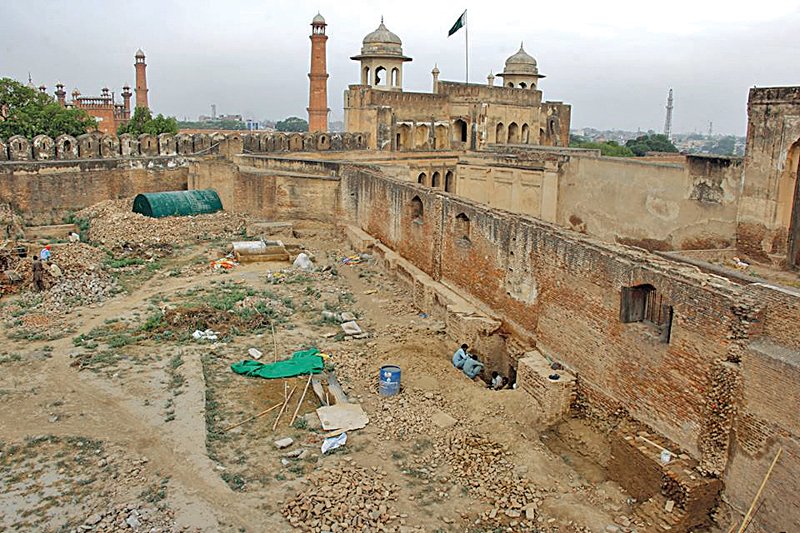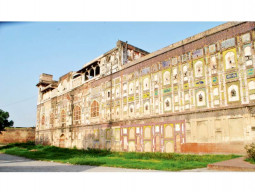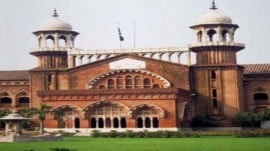
WCLA Media and Marketing Deputy Director Tania Qureshi said the project was being supported entirely through self-generated funds of the Lahore Fort and is expected to be finished by October this year.
Tania told The Express Tribune that the royal kitchen or Shahi Bawarchi Khana, located at the backside of grand Alamgiri Gate, were always a neglected part of the fort.
“Waist-high shrubs, wild plantation and dangerous reptiles had turned it into a no-go area for regular visitors,” she remarked.
Tania said when WLCA took up Lahore Fort in 2015, it had planned to clean up the site, recognising its historical importance and potential as yet another tourist spot. She said the process began with excavation to reach the original ground level in 2016, meanwhile detailed technical documentation that involved scanning, photography and videography was carried out as well.
Lahore Fort’s Picture Wall conservation kicks off
“Right now the project is in the stage of being conserved and turned into an active tourist attraction,” Tania said.
She said some part of the kitchen was being turned into a night cafe and sitting area. However, according to Tania, in order to make sure that the sensitive heritage structure remained preserved from factors like fire and water, cooking will be carried out in a kitchen area that is being built an at appropriate distance from the original building.
“It involves laying separate drainage lines to ensure that the actual structure remains away and safe from any of the activity that goes in the kitchen,” she added.

The project also involved utilising empty spaces and turning them into open air theatres for cultural and musical activities. The royal kitchen is essentially one unit hallway building that was collapsed eventually in parts giving it an image of several different buildings.
A century later, Bahawalpur’s Darbar Mahal stands tall
Historical details
According to the historical details of the site shared by Tania, the kitchen was constructed during the reign of Emperor Shah Jehan and huge variety of food and drinks were served to the royal family.
“When the Sikhs took over the Lahore Fort, the royal kitchen was damaged like many other buildings inside the fort as the kitchen was converted into a food storeroom and at the same time it was used as a stable for horses and other animals,” Tania said.
“The British in 1849 converted it into interrogation cells and jail and the open verandas were closed with bricks and new structures like iron doors and beams were added along with the construction of an upper storey,” she added.
Tania said the upper storey served as the offices for policemen and the electricity supply lines, sewerage system and water drains were also laid during the British period.
During the British rule, another storey was added in the building and some historians and architects claim that the structure we see today was the upper most storey of the building and the original kitchen was buried below.
“On the other hand some historians and architects believed that the kitchens never existed there and to look for history, excavation and digging of the place is required,” Tania said. The building also suffered damages during partition riots as the beams windows and wooden doors were taken away.
“After partition the police department used the site as interrogation cells until late 1980s when they were handed over to the Archaeology Department and the offices for the department were also constructed,” she said.
Published in The Express Tribune, June 12th, 2017.






































COMMENTS (1)
Comments are moderated and generally will be posted if they are on-topic and not abusive.
For more information, please see our Comments FAQ